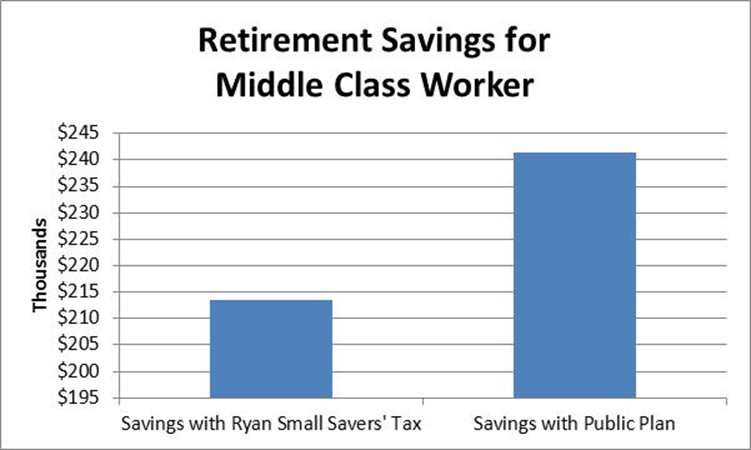February 23, 2017
As everyone knows, the fundamental principle of the Republican party is to redistribute as much income as possible from the rest of us to the rich. In keeping with this principle, Paul Ryan and the Republicans in Congress are pushing through a proposal to make workers pay larger fees on their retirement accounts. Unlike conventional taxes, which could be wasted on things like education or child care, these fees go directly into the pockets of the financial industry. This way people will be able to see the benefits of their fees in the form of expensive houses and cars for the bankers, as well as the folks going to expensive restaurants and flying first class.
The story here is a simple one. Few workers have traditional defined benefit pensions any longer. For most workers, 401(k) plans have not been an adequate replacement. They are unable to put much money into these accounts and much of the money they do put in is eaten up by fees charged by the banks and insurance companies that administer them. Furthermore, many people end up cashing out these accounts when they change employers, leaving little for retirement.
To address these problems several states are considering measures to allow workers to contribute to plans managed by the state. Illinois has a plan that is going into operation this year while California’s will be up and running in 2020. Several other states are considering similar measures.
The advantage of these plans is that workers could keep the same account as they changed jobs. Also, the fees would be much lower, with state managed plans likely averaging fees in the range of 0.2–0.3 percent annually. This compares to fees averaging close to 1.0 percent in privately run 401(K)s, with some charging over 1.5 percent.
This may seem like a small difference, but it adds up over a worker’s career. Imagine a person earning $60,000 a year and putting 6 percent of their pay, or $3,600 a year, into a 401(k) for thirty years. At the end of thirty years, the difference between a plan with annual administrative costs of 0.3 percent and a plan with costs of 1.0 percent would be almost $30,000. (This calculation assumes a 5.0 percent average annual nominal return.)
 Source: Author’s calculation, see text.
Source: Author’s calculation, see text.
The difference would be even larger if we factored in that private accounts are likely to charge between 10 to 20 percent of savings to convert the sum into an annuity when workers retire. A public plan would charge considerably less.
The Republicans route for nixing the state plans is by overturning a ruling by the Labor Department that employers who send checks into the public plan are not subject to the requirements of the Employee Retirement Income Security Act or ERISA. The ERISA rules are to ensure that pension plans being managed by employers are done so properly and to reduce the risk of fraud. In the case of these state sponsored plans, the employer is not running a plan, they are just sending in a check for their employee, so it makes sense the ERISA rules would not apply to them. If they were applied, it would make it far more burdensome for small employers to participate, likely making the publicly managed plan impractical.
Incredibly, the rationale for applying ERISA rules is that Republicans claim workers need government protection. These are the same people who are trying to gut the Consumer Financial Protection Bureau and working to eliminate the fiduciary rule, requiring investment advisers to act on behalf of their clients. The only common principle in these actions is giving more money to the banks.
Paul Ryan and Company already gave the green light to the small savers tax. The Senate will vote on it when they return from recess.







Comments